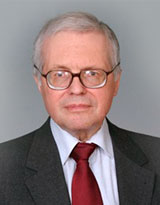Автоматизация проверки на плагиат: новый подход к анализу кода в цифровой образовательной платформа Мирера
https://doi.org/10.25682/NIISI.2025.1.0007
Аннотация
Задача выявления плагиата в решениях задач по программированию является высокоприоритетной при разработке цифровых образовательных платформ. Это связано с необходимостью оперативно оценивать уровень заимствования в решениях студентов, чтобы динамически формировать финальную оценку выполнения задания. Методы сравнения решений учащихся, основанные только на текстовом соотнесении их частей без привязки к характерным особенностям используемого языка программирования, зачастую не дают точных и достоверных результатов, так же как и статистические методы, основанные на машинном обучении. В данной работе предложен подход, повышающий качество выявления плагиата при блочно-кусочном сравнении студенческих решений, опирающийся на учёт синтаксических особенностей языков программирования.
Об авторах
Д. И. КадинаРоссия
Москва
А. Г. Леонов
Россия
Москва
Н. С. Мартынов
Россия
Москва
К. А. Мащенко
Россия
Москва
Э. А. Орлов
Россия
Москва
А. И. Стрекалова
Россия
Москва
Список литературы
1. W. Murray. “Cheating in Computer Science”. In: Ubiquity (2010), p. 2. doi: 10.1145/1865907.1865908.
2. G. Cosma and M. Joy. “Towards a Definition of Source-Code Plagiarism”. In: IEEE Transactions on Education (2008), pp. 195–200. doi: 10.1109/te.2007.906776.
3. Curtis, G.J. and Popal, R., 2011. An examination of factors related to plagiarism and a five-year follow-up of plagiarism at an Australian university. International Journal for Educational Integrity, 7(1), pp.30-42.
4. Pierce, J. and Zilles, C., 2017, March. Investigating student plagiarism patterns and correlations to grades. In Proceedings of the 2017 ACM SIGCSE Technical Symposium on Computer Science Education (pp. 471-476).
5. Maryon, Thomas; Dubre, Vandy C. Mrs.; Elliot, Kimberly; Fagan, Mary Helen; Standridge, Emily; and Lieneck, Christian, "COVID-19 Academic Integrity Violations and Trends: A Rapid Review" (2022). Healthcare Policy, Economics and Management Faculty Publications and Presentations. Paper 1.
6. Ambati, S.H., Stakhanova, N. and Branca, E., 2023, October. Learning AI coding style for software plagiarism detection. In International Conference on Security and Privacy in Communication Systems (pp. 467-489). Cham: Springer Nature Switzerland.
7. Hourrane, O., 2019. Rich style embedding for intrinsic plagiarism detection. International Journal of Advanced Computer Science and Applications, 10(11).
8. Mikolov, T., Sutskever, I., Chen, K., Corrado, G., Dean, J.: Distributed Representations of Words and Phrases and their Compositionality. arXiv:1310.4546 [cs, stat] (Oct 2013)
9. Le, Q., Mikolov, T.: Distributed representations of sentences and documents. In: Proceedings 31st International Conference on Machine Learning. vol. 32, pp. 1188– 1196 (2014)
10. Zhang, Y., Jin, R. and Zhou, Z.H., 2010. Understanding bag-of-words model: a statistical framework. International journal of machine learning and cybernetics, 1, pp.43-52.
11. El-Rashidy, M.A., Mohamed, R.G., El-Fishawy, N.A. and Shouman, M.A., 2022. Reliable plagiarism detection system based on deep learning approaches. Neural Computing and Applications, 34(21), pp.18837-18858.
12. Schleimer, S., Wilkerson, D.S. and Aiken, A., 2003, June. Winnowing: local algorithms for document fingerprinting. In Proceedings of the 2003 ACM SIGMOD international conference on Management of data (pp. 76-85).
13. Prechelt, L., Malpohl, G. and Philippsen, M., 2002. Finding plagiarisms among a set of programs with JPlag. J. Univers. Comput. Sci., 8(11), p.1016.
14. Joy, M. and Luck, M., 2002. Plagiarism in programming assignments. IEEE Transactions on education, 42(2), pp.129-133.
15. Ahadi, A. and Mathieson, L. (2019). A comparison of three popular source code similarity tools for detecting student plagiarism. In: Proceedings of the Twenty-First Australasian Computing Education Conference, ACE’19, 112–117.
16. Devore-McDonald, B. and Berger, E.D., 2020. Mossad: Defeating software plagiarism detection. Proceedings of the ACM on Programming Languages, 4(OOPSLA), pp.1-28.
17. Леонов А.Г., Мартынов Н.С., Мащенко К.А., Холькина А.А., Шляхов А.В. Автоматизация проверки семантической составляющей текстовых ответов обучающихся в цифровой образовательной платформе // Программные продукты и системы. 2024. Т. 37. № 3. С. 440–452. doi: 10.15827/0236-235X.142.440-452
18. Liu, C., Chen, C., Han, J. and Yu, P.S., 2006, August. GPLAG: detection of software plagiarism by program dependence graph analysis. In Proceedings of the 12th ACM SIGKDD international conference on Knowledge discovery and data mining (pp. 872-881).
19. Hayden Cheers, Yuqing Lin, Weigen Yan, Identifying Plagiarised Programming Assignments with Detection Tool Consensus, Informatics in Education 22(2023), no. 1, 1-19, DOI 10.15388/infedu.2023.05
20. Cheers, H., Lin, Y. and Smith, S.P., 2021. Academic source code plagiarism detection by measuring program behavioral similarity. IEEE Access, 9, pp.50391-50412.
21. Levenshtein, V.I., 1966, February. Binary codes capable of correcting deletions, insertions, and reversals. In Soviet physics doklady (Vol. 10, No. 8, pp. 707-710).
Рецензия
Для цитирования:
Кадина Д.И., Леонов А.Г., Мартынов Н.С., Мащенко К.А., Орлов Э.А., Стрекалова А.И. Автоматизация проверки на плагиат: новый подход к анализу кода в цифровой образовательной платформа Мирера. Труды НИИСИ. 2025;15(1):52-57. https://doi.org/10.25682/NIISI.2025.1.0007
For citation:
Kadina D.I., Leonov A.G., Martynov N.S., Mashchenko K.A., Orlov E.A., Strekalova A.I. Plagiarism Detection Automation: a New Approach to Code Analysis in the Mirera Digital Educational Platform. SRISA Proceedings. 2025;15(1):52-57. (In Russ.) https://doi.org/10.25682/NIISI.2025.1.0007







